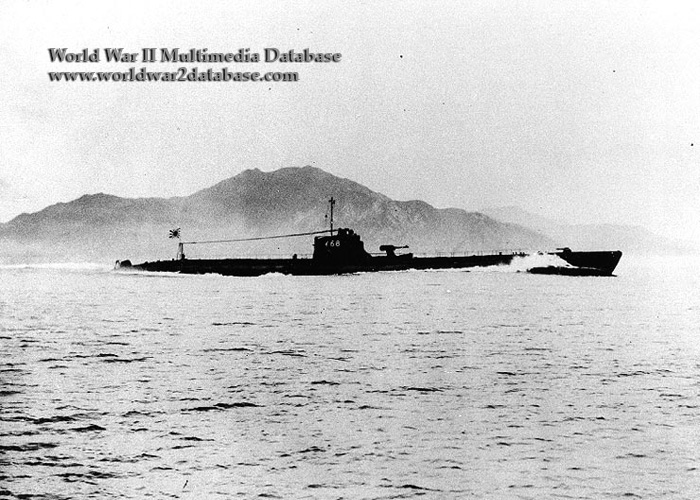| Imperial Japanese Navy submarine I-68 (later I-168) during builder‘s trials. Commissioned on July 31, 1934 at Kure. The Kaigun-Dai, or Kaidai (Navy first class) type 6 class was the fastest Japanese submarine at the time of its launching. Later submarine classes were only marginally faster. I-68 was repeatedly and heavily depth charged, damaging the after torpedo tubes, several times during the Pearl Harbor operation in December 1941. She returned to Kure for repairs on December 23. Commander Yahachi Tanabe is assigned to command I-68 on January 31, 1942. After being renumbered I-168 as part of a general submarine reorganization on May 20, 1942, the sub went to Midway as part of the reconnaissance force. She sank USS Hammann (DD-412) and USS Yorktown (CV-5) on June 6 after stalking the carrier for nine hours. After the operation was cancelled because of the loss of four Japanese carriers, I-68 is low on fuel; she was expected to refuel at the newly captured station at Midway, but the invasion never took place. After twelve days of slow travel on two engines, I-68 arrives at Yokosuka, Japan with nearly dry tanks. Tanabe is promoted to captain the new I-176. Lieutenant Commander Sakae Nakajima takes command on October 15, 1942. After making supply runs to the Japanese troops on Guadalcanal, I-168 is sunk with 97 officers and crew missing in action, including Nakajima. Unlike American submarines, which were effectively used to strangle Japanese commerce, the Japanese submarines were ordered to only attack capital ships, support the main body of the fleet, and make small drops of supplies. These policies effectively limited the combat effectiveness of the Japanese submarines and neutralized their effective “Long Lance“ torpedoes. If, on December 7, 1941, Combined Fleet Admiral Isoroku Yamamoto signed an order for unrestricted submarine warfare, as United States Navy Admiral Ernest J. King implemented that day (despite American criticism of the German tactics in both World War I and II) the war would have been much longer and costlier, as the seas would have to be cleared before the American military advance began. | |
| Image Filename | wwii1302.jpg |
| Image Size | 191.86 KB |
| Image Dimensions | 700 x 500 |
| Photographer | Unknown |
| Photographer Title | |
| Caption Author | Jason McDonald |
| Date Photographed | March 01, 1934 |
| Location | I-68 |
| City | Kure |
| State or Province | Hiroshima Prefecture |
| Country | Japan |
| Archive | United States Naval Historical Center |
| Record Number | |
| Status | Caption ©2007, ©2024 MFA Productions LLC Image in the Public Domain |

Author of the World War II Multimedia Database

